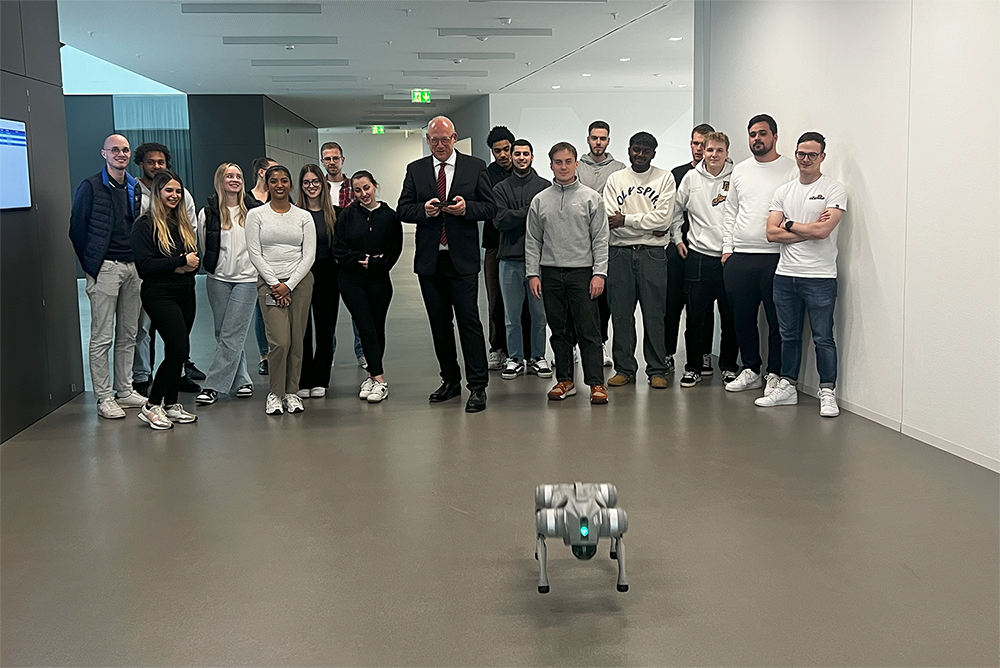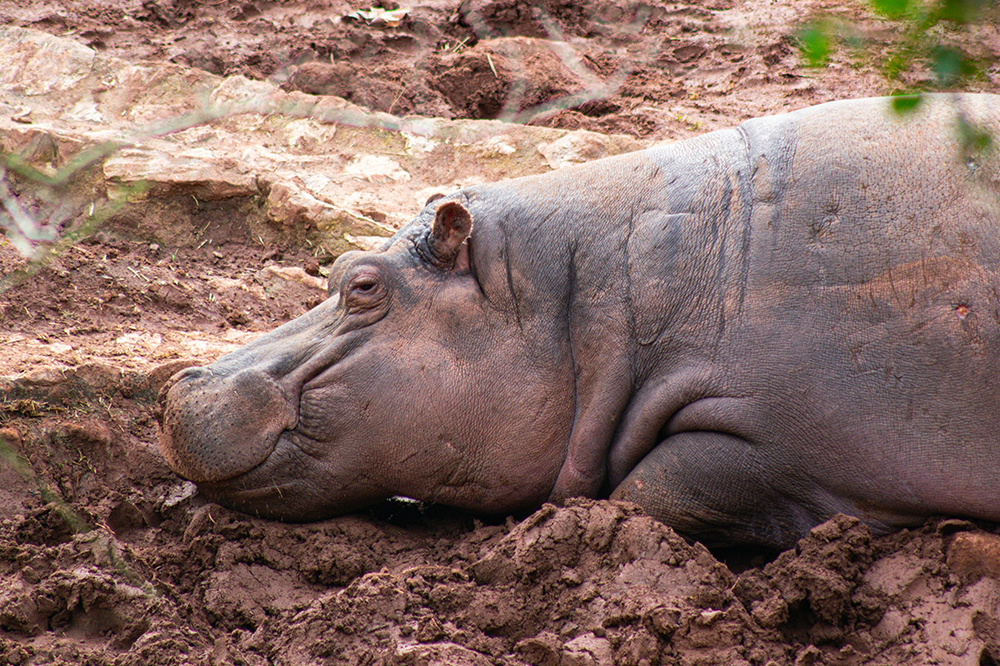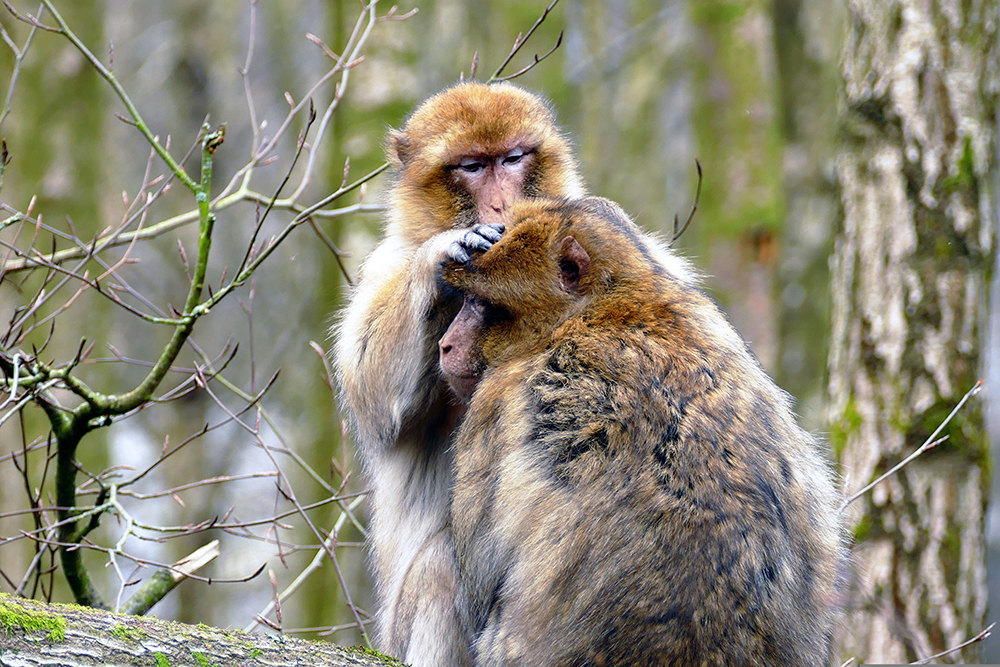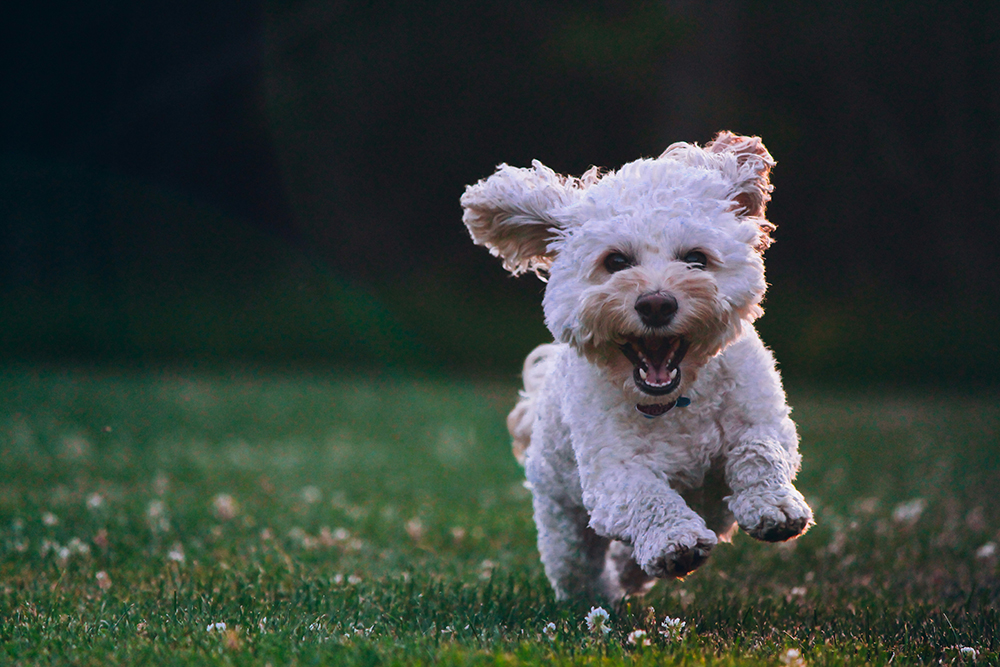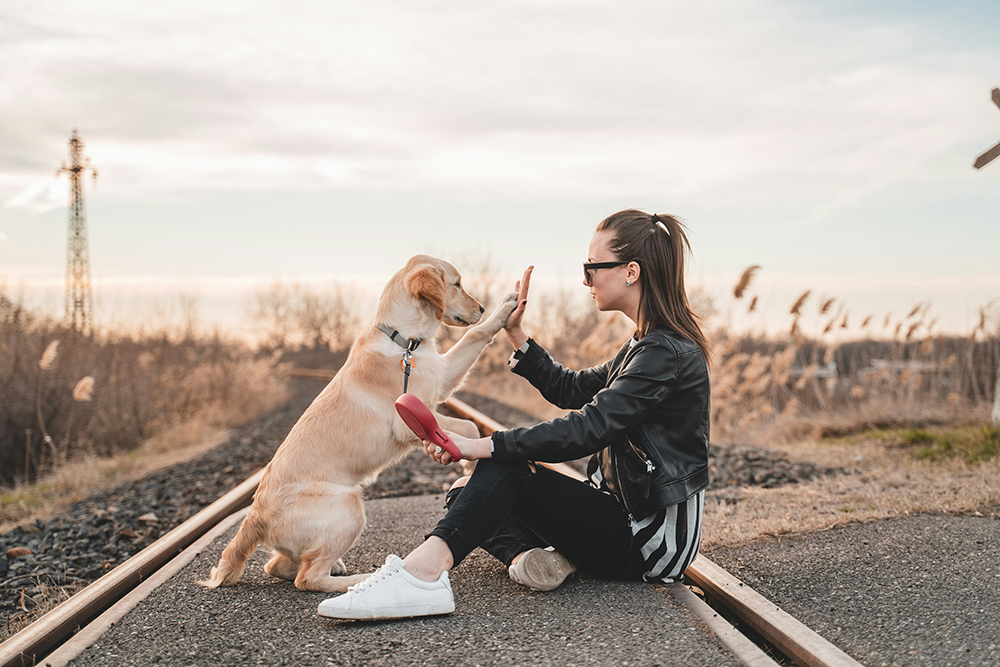Prof. Dr. Oliver Bendel will host the next ACI Conference, marking the first time the event comes to continental Europe as it convenes on the FHNW campus in Brugg-Windisch, Switzerland, from 2-5 December 2026. Building on a tradition that has taken the community from Glasgow to North Carolina, Newcastle, Bloomington, Milton Keynes, Haifa and Atlanta, this edition continues the conference’s role as the premier venue for advancing Animal-Computer Interaction. As the field grows, researchers and practitioners explore how technology shapes animals’ lives, wellbeing, cognition and social dynamics while developing animal-centered systems and methods that embrace multispecies perspectives. The conference maintains its commitment to interdisciplinary collaboration across biology, technology and cultural studies, supporting work that seeks to design ethically grounded, welfare-enhancing and inclusive technological futures for all animals, humans included. Proceedings will be published in the ACM Digital Library, and the official conference website will go live in January 2026. Information on previous ACI conferences is available at www.aciconf.org.
Fundamentals of Animal-Machine Interaction
“Just.Us + Animal Welfare” is a lecture series organized by Department 10 Veterinary Medicine to promote animal welfare at Justus Liebig University Giessen. On November 12, 2025, Prof. Dr. Oliver Bendel gave a lecture on “Bao meets Pluto: Grundlagen und Beispiele der Tier-Maschine-Interaktion” (“Bao meets Pluto: Fundamentals and examples of animal-machine interaction”). Animal-machine interaction deals with the encounter and coexistence of animals and machines – from classic devices to vehicles, aircraft, and agricultural machinery to networked, autonomous robots and AI systems. The focus is on perception through sensors and senses, interaction and communication between animals and machines, and the question of how these encounters can be designed technically, organizationally, and ethically in such a way that risks for animals are reduced and potential for them and for humans is tapped. In his lecture, Oliver Bendel laid out the fundamentals of animal-machine interaction and described prototypes and projects. He also outlined what is possible and to be expected in this field of research in the coming years, for example in connection with robotic quadrupeds and bipeds. The online lecture was followed by 660 listeners. Further information is available at www.uni-giessen.de/de/fbz/zentren/icar3r/akademie/justus.
The Hippo in the Mud
On November 10, 2025, the article “There’s a Large Hippo Resting in the Mud” by Oliver Bendel and Doris Jovic was published introducing the VISUAL project. “VISUAL” stands for “Virtual Inclusive Safaris for Unique Adventures and Learning”. All over the world, there are webcams showing wild animals. Sighted people can use them to go on photo and video safaris comfortably from their sofas. Blind and visually impaired people are at a disadvantage here. As part of Inclusive AI, the project developed a prototype specifically for them. Public webcams around the world that are directed at wild animals are tapped. Users can choose between several habitats on land or in water. They can also select “Adult” or “Child” as a profile and choose a role (“Safari Adventurer”, “Field Scientist”, “Calm Observer”). When the live video is accessed, three screenshots are taken and combined into a bundle. This bundle is analyzed and evaluated by GPT-4o, an MLLM. The user then hears a spoken description of the scene and the activities. The project is likely one of the first to combine Inclusive AI with new approaches in Animal-Computer Interaction (ACI). The article was published in Wiley Industry News and can be accessed at: wileyindustrynews.com/en/contributions/theres-a-large-hippo-resting-in-the-mud. It should be noted that it is also available in German.
Decoding Animal Language with AI
Recent advancements in artificial intelligence (AI) and bioacoustics have opened a unique opportunity to explore and decode animal communication. With the growing availability of bioacoustic data and sophisticated machine learning models, researchers are now in a position to make significant strides in understanding non-human animal languages. However, realizing this potential requires a deliberate integration of AI and ethology. The AI for Non-Human Animal Communication workshop at NeurIPS 2025 will focus on the challenges of processing complex bioacoustic data and interpreting animal signals. The workshop will feature keynote talks, a poster session, and a panel discussion, all aimed at advancing the use of AI to uncover the mysteries of animal communication and its implications for biodiversity and ecological conservation. The workshop is inviting submissions for short papers and proposals related to the use of AI in animal communication. Topics of interest include bioacoustics, multimodal learning, ecological monitoring, species-specific studies, and the ethical considerations of applying AI in animal research. Papers should present novel research, methodologies, or technologies in these areas, and will undergo a double-blind review process. The paper submission deadline is September 5, 2025, with notifications of acceptance by September 22, 2025. More information is available at aiforanimalcomms.org.
The DEEP VOICE Project
The DEEP VOICE project will be launched at the FHNW School of Business in early September 2025. It was initiated by Prof. Dr. Oliver Bendel. “DEEP VOICE” stands for “Decoding Environmental and Ethological Patterns in Vocal Communication of Cetaceans”. The project aims to decode symbolic forms of communication in animals, especially whales. It is based on the conviction that animal communication should not be interpreted from a human perspective, but understood in the context of the species-specific environment. The focus is therefore on developing an AI model that is trained on the basis of a comprehensive environmental and behavioral model of the respective animal. By integrating bioacoustic data, ecological parameters, and social dynamics, the aim is to create an animal-centered translation approach that allows the identification of meaning carriers in animal vocalizations without distorting them anthropocentrically. The project combines modern AI methods with ethological and ecological foundations and thus aims to contribute to a better understanding of non-human intelligence and communication culture and to animal-computer interaction. Oliver Bendel and his students have so far focused primarily on the body language of domestic and farm animals (The Animal Whisperer Project) and the behavior of domestic (The Robodog Project) and wild animals (VISUAL).
The Robodog Project is Done
“The Robodog Project: Bao Meets Pluto” examined how domestic dogs respond to the Unitree Go2 quadruped robot – nicknamed Bao by project initiator Prof. Dr. Oliver Bendel – and how their owners perceive such robots in shared public spaces. The project began in late March 2025 and was completed in early August 2025. The study addressed three questions: (1) How do dogs behaviorally respond to a quadruped robot across six conditions: stationary, walking, and jumping without an additional dog head, and stationary, walking, and jumping with an additional 3D-printed dog head? (2) What are owners’ expectations and concerns? (3) What regulatory frameworks could support safe integration? Twelve dogs were observed in six structured interaction phases; their behavior was video-coded using BORIS.Another dog participated in a preliminary test but not in the actual study. Pre-exposure interviews with eight owners, as well as an expert interview with a biologist and dog trainer, provided additional insights. Led by Selina Rohr, the study found most dogs were cautious but not aggressive. Curiosity increased during robot movement, while visual modifications had little impact. However, a 3D-printed dog head seemed to interest the dogs quite a bit when the robot was in standing mode. Dogs often sought guidance from their owners, underlining the role of human mediation. Owners were cautiously open but emphasized concerns around safety, unpredictability, and liability. The findings support drone-like regulation for robot use in public spaces.
Completion of the VISUAL Project
On July 31, 2025, the final presentation of the VISUAL project took place. The initiative was launched by Prof. Dr. Oliver Bendel from the University of Applied Sciences and Arts Northwestern Switzerland (FHNW). It was carried out by Doris Jovic, who is completing her Bachelor’s degree in Business Information Technology (BIT) in Basel. “VISUAL” stands for “Virtual Inclusive Safaris for Unique Adventures and Learning”. All over the world, there are webcams showing wild animals. Sighted individuals can use them to go on photo or video safaris from the comfort of their couches. However, blind and visually impaired people are at a disadvantage. As part of Inclusive AI, a prototype was developed specifically for them in this project. Public webcams around the world that are focused on wildlife are accessed. Users can choose between various habitats on land or in water. Additionally, they can select a profile – either “Adult” or “Child” – and a role such as “Safari Adventurer,” “Field Scientist”, or “Calm Observer”. When a live video is launched, three screenshots are taken and compiled into a bundle. This bundle is then analyzed and evaluated by GPT-4o, a multimodal large language model (MLLM). The user receives a spoken description of the scene and the activities. The needs of blind and visually impaired users were gathered through an accessible online survey, supported by FHNW staff member Artan Llugaxhija. The project is likely one of the first to combine Inclusive AI with new approaches from the field of Animal-Computer Interaction (ACI).
When the Robodog is Barked at
Animal-machine interaction (AMI) is a discipline or field of work that deals with the interaction between animals and machines. This is how Prof. Dr. Oliver Bendel explains it in the Gabler Wirtschaftslexikon. It is primarily concerned with the design, evaluation, and implementation of complex machines and computer systems with which animals interact and which in turn interact and communicate with animals. There are close links to animal-computer interaction (ACI). Increasingly, the machine is a robot that is either remote-controlled or (partially) autonomous. In “The Robodog Project” (also known as “Bao Meets Pluto“), the encounters between robotic quadrupeds and small to medium-sized dogs are explored. The project collaborator is Selinar Rohr, who is writing her bachelor’s thesis in this context. The walking, running, and jumping Unitree Go2 from Oliver Bendel’s private Social Robots Lab is in its original state or is wearing a head made with a 3D printer provided by Norman Eskera. The project is being carried out at the FHNW School of Business and will end on August 12, 2025, after which the results will be presented to the community and, if possible, to the general public.
The Robodog Project Starts
Robotic four-legged friends – often referred to as robot dogs – are becoming more and more widespread. As a result, they will also encounter more and more real dogs. The question is how to design, control, and program the robot in such a way that the animals do not overreact and cause no harm to robots, animals, or bystanders. As part of “The Robodog Project”, smaller dogs are to be confronted with a walking, running, and jumping Unitree Go2. The plan is to visit controllable environments such as dog training grounds and arrange meetings with dog owners. The findings will lead to suggestions for design and control. Robot enhancement can also play a role here. For example, hobbyists have produced heads for Unitree Go2 using a 3D printer, giving the robot a completely different look. Suggestions for programming will also be made. The project is due to start at the FHNW School of Business in March 2024. It is part of Prof. Dr. Oliver Bendel’s research in the field of animal-machine interaction.
13 Animal-Related Concepts and Artifacts
Since 2012, Oliver Bendel has developed 13 concepts and artifacts in the field of animal-computer interaction (ACI) or animal-machine interaction (AMI) together with his students. They can be divided into three categories. The first are animal- and nature-friendly concepts. The second are animal-friendly machines and systems (i.e., forms of moral machines). The third are animal-inspired machines and systems that replace the animals or bring them closer to you. Articles and book chapters have been published on many of the projects. The names of the developers can be found in these. A few prototypes made it into the media, such as LADYBIRD and HAPPY HEDGEHOG. Oliver Bendel repeatedly refers to Clara Mancini, the pioneer in the field of animal-computer interaction. Recently, ethicists such as Peter Singer have also turned their attention to the topic.

